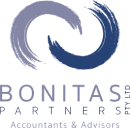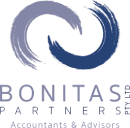Introduction
The Fringe Benefits Tax (FBT) year ends on 31 March 2024. You may be asking what is FBT and how does it apply to me as a business owner? Let’s first start with an overview of FBT and how it came into play.
FBT is a Commonwealth imposed tax on employers. It applies to most employers operating either as:
- Sole traders
- Companies
- Trustees (trust structure)
- Partnerships
- Charities and not -for -profits that are wholly or partly income tax exempt
FBT was introduced in 1986 to capture non-cash benefits provided to employees and/or their associates in connection with their current, past or prospective employment.
Who Is An Employee?
An employee includes:
- Company directors and office holders
- Common law employees
- Recipients of compensation payments
Who Is An Associate?
An associate of an employee includes the employee’s:
- Spouse
- Children
- Parents
- Brothers and sisters
- Aunts and uncles
- Lineal descents
- Adopted children
There are several reasons the Government introduced the FBT rules including:
- To prevent employees from replacing salaries and wages, which are taxed at their marginal tax rate, with non-cash benefits
- To create a level playing field so all forms of remuneration, cash or otherwise, are subject to tax
- And, of course, to increase Commonwealth revenue
The legislation was cleverly drafted such that everything provided to an employee and/or associate is deemed a benefit, unless specifically excluded under the rules.
Exemptions
There are a number of exemptions available to exclude certain benefits from FBT. Some of the more common exemptions include:
- Portable electronic devices (think laptop, tablet, smart phone) mainly used for work purposes
- Computer software mainly used for work purposes
- Briefcase provided the employee uses it for work purposes
- Reimbursement of car expenses where the reimbursement is based on the approved $ per km rate
- Emergency assistance such as emergency food supplies, clothing, transport, accommodation, household goods and healthcare
- Superannuation benefits
- Tools of trade where the tools are used mainly for work purposes
- Counselling services involving work related matters such as health and safety, stress management, substance abuse, first aid
- Taxi and ride sourcing travel where the trip is one way and starts or ends at the employee’s place of work
- Newspapers and periodicals where the publications are used in respect of employment
- Professional memberships and subscription fees such as trade associations and professional journals
- Certain zero or low emission cars where their cost is below the fuel-efficient luxury car tax threshold (battery electric, hydrogen fuel cell electric or plug in hybrid electric [1]).
- Minor benefits where the total value including GST is less than $300
Common Fringe Benefits
Some of the more common fringe benefits include:
- Provision of cars
- Payment of school fees
- Payment of private health insurance premiums and gym memberships
- Entertainment
- Loans
FBT is payable by the employer, even if the employer is income tax exempt (ie registered charity). FBT is levied at 47% of the taxable value of benefits provided.
The taxable value is essentially the amount the employee would have needed to earn pre-tax to pay for the non-cash benefit from after-tax earnings themselves. It assumes the employee is subject to the highest marginal tax rate.
FBT and income tax are mutually exclusive. They are 2 separate and distinct taxes.
The FBT Year Ends on 31 March 2024 – What Do I Need to Do?
As the end of the 2024 FBT year approaches, it is crucial for you to take proactive steps to ensure your business complies with the FBT rules and minimises potential liabilities.
Here are our tips to help you prepare for the end of the year.
Tip 1 – Review Obligations
Identify any fringe benefits you have provided your employees and/or associates of employees between 1 April 2023 and 31 March 2024.
Tip 2 – Maintain Accurate Records
Ensure you have detailed and accurate records of all fringe benefits provided during the FBT year. Records include receipts, invoices and supporting documentation related to each benefit provided.
Detailed and accurate records help to facilitate FBT return preparation. They are also helpful in the event the ATO comes knocking.
Tip 3 – Employee Declarations
To ensure FBT compliance, it is necessary to hold all necessary employee declarations. Declarations prove you are entitled to reduce the amount of FBT payable where the benefit would be otherwise deductible to the employee.
For example, if the employer reimburses the employee for their mobile phone charges and the employee uses the device for 50% business use, only 50% of the expense reimbursement would be subject to FBT. Why? The employee would be able to claim a deduction in their personal tax return for 50% of the mobile phone charges.
Tip 4 – Consider FBT Exemptions
Your business may be eligible for certain FBT exemptions or concessions which can help reduce your FBT liabilities. There are many exemptions and concessions, some of which are outlined above.
Don’t be too quick to conclude that a benefit is taxable. There may be a way out.
Tip 5 – Salary Packaging
Salary packaging can be an effective way to provide additional benefits to employees. This can be particularly so with a new motor vehicle.
Electric vehicles that cost less than $89,332 (brand new vehicles acquired or leased in the 2024 year) end are currently free from FBT. If an employee is looking to buy a new vehicle and is willing to drive an electric one, salary packaging the vehicle can be a win-win for the employee and employer.
Tip 6 – Seek Professional Advice
FBT is complex and calculating the taxable value of different types of benefits can vary significantly. Unless you are very familiar with how the taxable value of a benefit is calculated, we recommend you obtain professional help from your accountant and/or registered tax agent.
Tip 7 – Lodge FBT Returns on Time
Businesses with an FBT liability need to ensure they lodge their FBT return on time to avoid penalties and interest charges.
It is crucial you plan ahead and allocate sufficient time to manage FBT compliance activities.
Summary
FBT is complex and seen as an administrative burden for business owners. The Commonwealth raises around $4 billion in revenue each year from FBT.
It is common for small businesses to overlook the fact that any benefit provided to an employee is taxable unless an exemption applies.
Don’t assume that just because you don’t provide any benefits, you shouldn’t register for FBT. If you employ people, you should register.
If you are registered and believe you don’t have an FBT liability, it is best to lodge a $nil FBT return each year.
If you require deeper support, remember that I’m always here to help. Feel free to book a confidential call with me to assess your specific circumstances. With more than 20 years of experience with businesses just like yours, I can help you navigate your way through the FBT minefield.
Want To Work With Us?
Our services are always tailored to the size, requirements and operational challenges of your unique enterprise.
Discovery Call
An initial, 45 minute video call to understand your unique financial and business challenges.
Financial Health Check
Gain access to your accounting system and conduct a high-level financial health check of your business.
Make A Plan
We present the results of our health check along with our recommendations on what a sensible plan is to help solve your most pressing problems.
Execute
We carry out the plan with your team, scaling our services up or down as appropriate throughout the life of our partnership.
Contact Us
Bonitas
Address:
Pivot City Innovation Precinct
Unit 6, 33 Mackey Street
North Geelong Victoria 3215
Hours:
Monday - Friday: 9:00 am – 5:30 pm
Phone:
E-mail:
hello@bonitas.com.au
Liability limited by a scheme approved under Professional Standards Legislation
© Copyright 2023 | All Rights Reserved | Website & Marketing By Butler & Co
Bonitas Partners Pty Ltd


